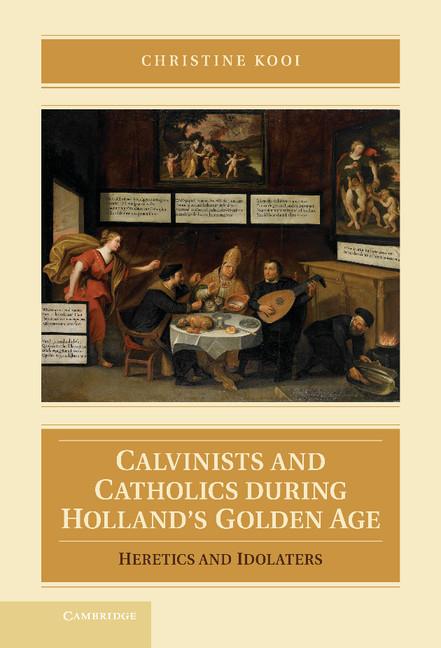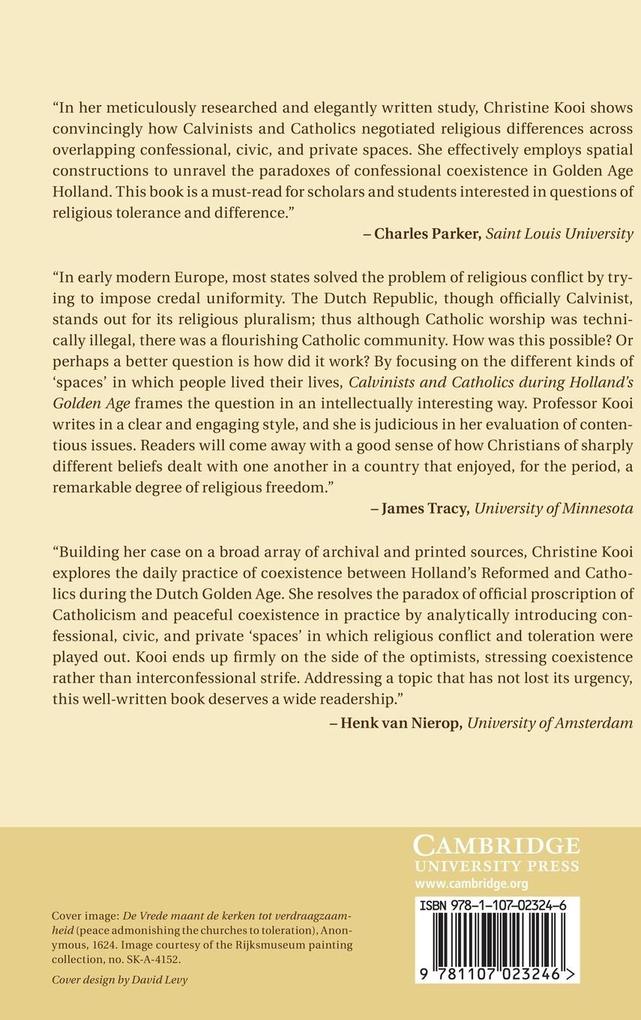
Zustellung: Mi, 16.07. - Sa, 19.07.
Versand in 7 Tagen
VersandkostenfreiBestellen & in Filiale abholen:
This book examines the social, political and religious relationships between Calvinists and Catholics during Holland's Golden Age.
Inhaltsverzeichnis
Introduction; 1. War and peace; 2. Priests and preachers; 3. Persecution and toleration; 4. Converts and apostates; 5. Kith and kin; Conclusion.
Produktdetails
Erscheinungsdatum
14. Mai 2014
Sprache
englisch
Seitenanzahl
258
Autor/Autorin
Christine Kooi
Verlag/Hersteller
Produktart
gebunden
Gewicht
574 g
Größe (L/B/H)
235/157/20 mm
ISBN
9781107023246
Entdecken Sie mehr
Pressestimmen
Advance praise: 'Christine Kooi, in her meticulously researched and elegantly written study, shows convincingly how Calvinists and Catholics negotiated religious differences across overlapping confessional, civic, and private spaces. She effectively employs spatial constructions to unravel the paradoxes of confessional coexistence in Golden Age Holland. This book is a must-read for scholars and students interested in questions of religious tolerance and difference.' Charles Parker, St Louis University 'In early modern Europe, most states solved the problem of religious conflict by trying to impose credal uniformity. The Dutch Republic, though officially Calvinist, stands out for its religious pluralism; thus although Catholic worship was technically illegal, there was a flourishing Catholic community. How was this possible? Or perhaps better, how did it work? By focusing on the different kinds of 'spaces' in which people lived their lives, Calvinists and Catholics during Holland's Golden Age frames the question in an intellectually interesting way. Professor Kooi writes in a clear and engaging style, and she is judicious in her evaluation of contentious issues. Readers will come away with a good sense of how Christians of sharply different beliefs dealt with one another in a country that enjoyed, for the period, a remarkable degree of religious freedom.' James Tracy, University of Minnesota 'Building her case on a broad array of archival and printed sources, Christine Kooi explores the daily practice of coexistence between Holland's Reformed and Catholics during the Dutch Golden Age. She resolves the paradox of official proscription of Catholicism and peaceful coexistence in practice by analytically introducing a confessional, a civic, and a private 'space' in which religious conflict and toleration were played out. Kooi ends up firmly on the side of the optimists, stressing coexistence rather than inter-confessional strife. Addressing a topic that has not lost its urgency, this well-written book deserves a wide readership.' Henk van Nierop, University of Amsterdam
Bewertungen
0 Bewertungen
Es wurden noch keine Bewertungen abgegeben. Schreiben Sie die erste Bewertung zu "Calvinists and Catholics During Holland's Golden Age" und helfen Sie damit anderen bei der Kaufentscheidung.










